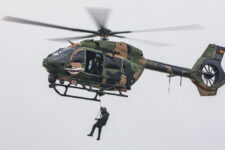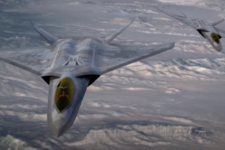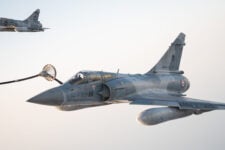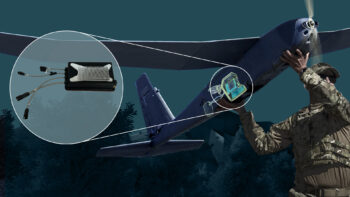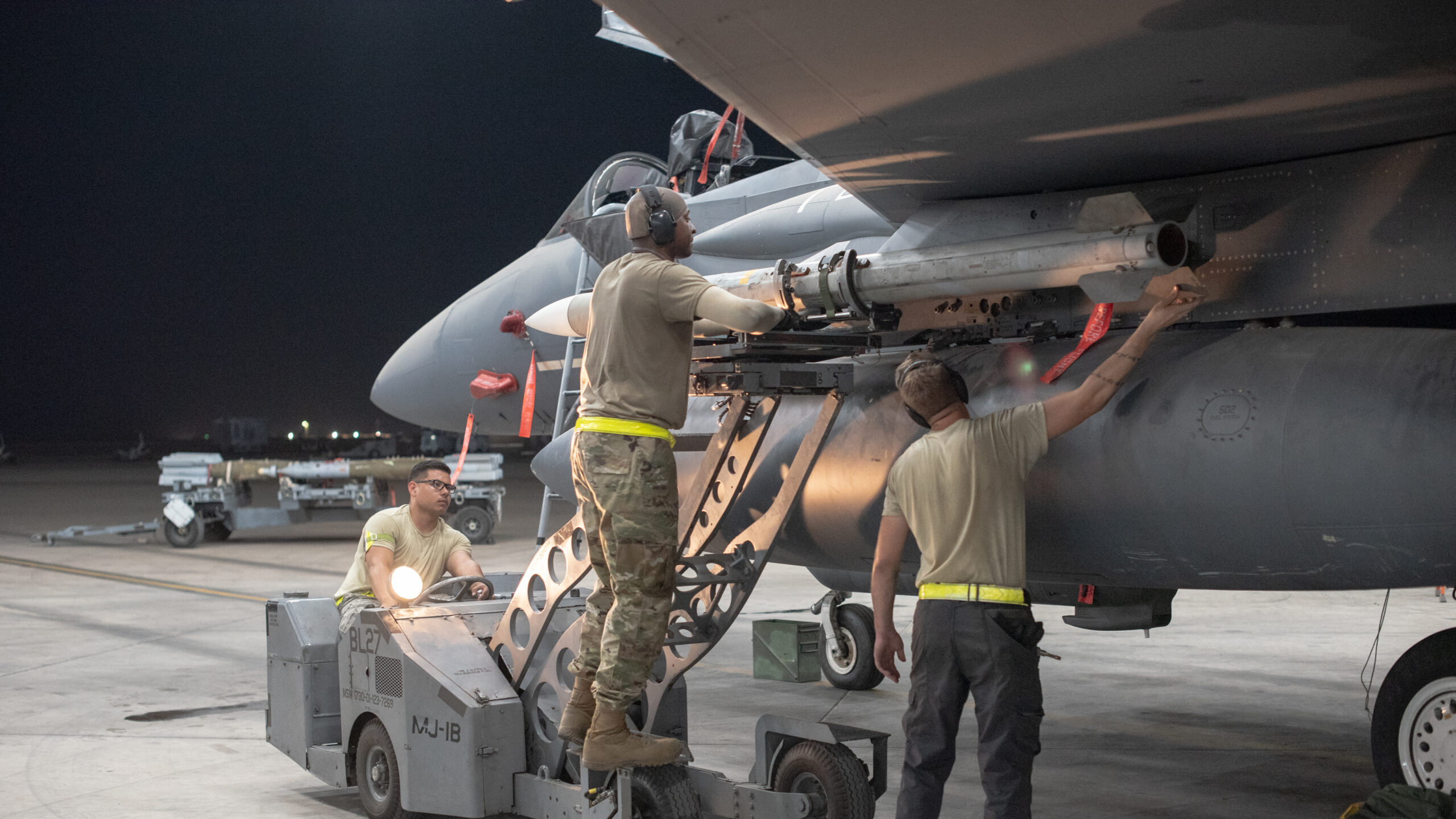
An F-15E Strike Eagle weapons load crew team attaches an AIM-120D to a pylon July 15, 2019, at Al Dhafra Air Base, United Arab Emirates. (U.S. Air Force photo by Staff Sgt. Chris Thornbury)
WASHINGTON — High demand will keep Raytheon’s AIM-120 Advanced Medium-Range Air-to-Air Missile (AMRAAM) production line humming at max capacity for years to come, according to the weapon’s manufacturer, Raytheon, as the US and other Western powers seek to ship more of the missiles to Ukraine and replenish their own stocks.
“Historically, we’ve been somewhere between 500-800 rounds a year,” said Paul Ferraro, president of air power for RTX subsidiary Raytheon, during a Thursday briefing with reporters. Current orders have ramped that number up to nearly 1,200, Ferraro said, hitting the company’s ceiling for the missile’s production. And given current demand, Ferraro said he expects that level of production to continue “for the foreseeable future.”
Ukraine has been hungry for the missiles to bat down a range of airborne threats from aircraft to cruise missiles. Billed as air-to-air missiles, Kyiv has primarily used AMRAAMs with the ground-based National Advanced Surface-to-Air Missile System (NASAMS), also made by Raytheon, though the impending transfer of F-16s means AMRAAMs could soon be fired from Ukrainian aircraft as well.
In addition to cranking out the current suite of AMRAAMs, Raytheon recently sought to upgrade hardware and software of the venerable missile with a new effort called form, fit, function refresh (F3R), which resulted in updated domestic and international variants. Though testing of the missiles is ongoing, the domestic AIM-120D-3 and international AIM-120C-8 upgraded weapons have already been ordered.
A Raytheon spokesperson told Breaking Defense that the US-focused D-3 variant would be expected to field “by the end of the year.” The spokesperson also said that a critical milestone called a functional configuration audit for the international C-8 would be completed in “late 2023 or early 2024,” with fielding expected “soon to follow.” The C-8 variant recently successfully completed its first flight test, RTX announced September 1.
Since neither missile has been formally fielded, upgraded AMRAAMs already produced will be warehoused by the company, the spokesperson explained, and once a fielding decision is made, the missiles will be delivered “as soon as possible to the locations designated by the USG [US government].”
The spokesperson added that the upgraded missiles could be available to Ukraine within the next three-to-five years, following a June $1.15 billion award to Raytheon to build more of the weapons, including orders for Ukraine. Even so, Ferraro claimed that older generation AMRAAMs shipped to the country have achieved a “90%+ success rate” against targets.
The Pentagon also separately placed a $192 million AMRAAM order on Thursday evening to procure already-fielded missiles from “various sources,” according to the contract announcement, with approximately $8 million obligated from the Ukraine Security Assistance Initiative. The Raytheon spokesperson said that program aims to “facilitate an international buy-back program and ensure Ukraine is able to continue receiving AMRAAMs that are effective regardless of version.”
Beyond AMRAAM’s own upgrades, the Air Force is set to replace the weapon with a successor known as the AIM-260 Joint Advanced Tactical Missile (JATM) developed by Lockheed Martin. In May, Air Force Secretary Frank Kendall said the JATM will “hopefully” begin production this year.
France makes new ‘pact’ with industry to speed small drone production, acquisition
Like Washington, Paris has learned that it must help commercial industry along and reform its own buying practices to catch up in explosion of small UAV battlefield use.

